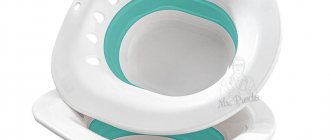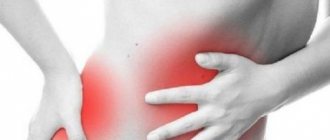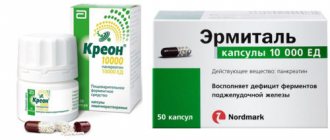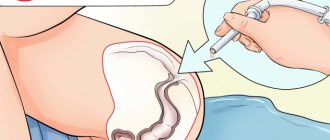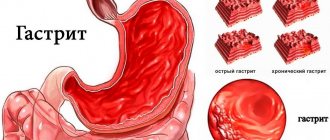An enema is usually called a special medical process during which, for medicinal purposes, water or a liquid medicinal substance is introduced into the human body through the anus into the rectum. For this procedure, a standard set of tips is used. In cases where there is a need to fill the rectum with water or a liquid medicinal suspension, special tubes at the end with tips for performing deep enemas are used. You can learn more about how to do an enema at home.
Characteristics and classification
Esmarch mug for colon cleansing
Enemas are characterized by a whole set of features, which includes their purpose, composition, volume, temperature and amount of injected solution. Based on these characteristics, there is a certain classification of such a medical procedure, which is as follows:
- Types of enemas by purpose. These include: cleansing (to cleanse the body of toxic substances); medicinal (a medicinal liquid is injected into the body for a certain time); nutritious (nutrients are introduced into the body to support its vitality); erotic (medical procedure aimed at obtaining sexual satisfaction); psychotropic (causing alcoholic or drug intoxication from the introduction of alcoholic or narcotic substances into the body); ritual (used in various cult sects as a rite of purification).
- Types of enemas based on the volume of substance administered. They are divided into: microenemas (the volume of the medicinal substance is 10 - 100 ml); cleansing enemas (the volume of the administered substance is approximately 1.5 - 2 liters to cleanse toxic substances); siphon enemas (the volume of the substance per procedure is 15 - 20 liters, which is poured in portions of 1 - 2 liters).
- Types of enemas according to the composition of the substance. They are:
- Simple
- Soapy
- Glycerin
- Medicinal
- Hypertonic composition
- Oil composition
- Oxygen filling
- With additives of food acids (citric acid).
Types of enemas according to temperature indicator are divided into:
- Cold enemas (the temperature of the injected substance should be below room temperature)
- Hot enemas (the temperature of the injected liquid should be 40 - 45°C)
- Cool enemas (the temperature of the substance should be at room temperature)
- Warm (the temperature of the injected liquid should be slightly higher than normal human temperature and not exceed 40°C).
It is worth noting that of the types of enemas considered, some are often used in practice and are included in the treatment process as one of the main procedures, while others have become history and are practically not used anywhere. They are only described in medical textbooks and encyclopedias. An example of such a historical enema would be a tobacco or nutritional type.
Who needs stomach and intestinal cleansing?
Before carrying out measures to remove waste and toxins, you must make sure that these measures are necessary. The following signs indicate that the body is “contaminated”:
- Chronic fatigue
- Fast fatiguability
- Periodic problems with the gastrointestinal tract: constipation, flatulence, diarrhea, bloating
- Deterioration of skin condition
- Brittle hair and nails
- Frequent colds
- Sleep disturbance
- Migraine
- Breathing problems, shortness of breath
Also at risk are people who predominantly live in urban areas, are exposed to stress and adverse environmental influences, often drink alcohol, and take a lot of medications. The following also have a great influence on the “clogging” of the body:
- Frequent snacking
- Regular visits to fast food restaurants
- Refusal to play sports
- Eating too fatty foods
- Food containing large amounts of harmful food additives
Features of carrying out treatment procedures using an enema at home
Giving an enema is an unpleasant procedure
It is generally accepted that every person should be able to give an enema. This procedure should especially apply to those who are actively involved in health fasting. But as statistics show, many people are very far from being able to perform such procedural actions. They even have a vague idea of what benefits an enema can bring to their body, if only for the purpose of cleansing it of toxic substances accumulated in it. To achieve this goal, you only need to have three qualities - desire, willpower and experience. The experience itself consists of special knowledge and skills acquired in the course of performing such simple, health-improving prophylaxis for the body.
For those who are interested in the question of how to do an enema at home, it is worth noting that this procedure is very useful in combination with health-improving fasting. To do this, it must be carried out in the following stages:
- Stage 1 – preparatory. An enema should be used to cleanse the colon of toxic accumulations.
- Stage 2 is the final stage. An enema should be used to support the digestive process until it begins to function properly.
During health fasting, enemas greatly facilitate this process, especially in its first days. Therefore, it should be done at the very beginning of this useful prevention for 7–10 days with a frequency of no more than 1 time in 2 days.
Various techniques
The essence of the manipulation is the repeated introduction of a lavage liquid into the gastric cavity and its subsequent removal along with the contents of the digestive organ.
Tiger method
Eastern sages noticed a long time ago the tiger’s ability to regurgitate excess food. They believed that this was one of the reasons for the health and power of this strong animal. People tried to adopt this method of cleansing the stomach. It is often used after overeating. This method cannot be abused, since frequent gluttony, even with further cleansing of the stomach, essentially destroys the body.
The washing technique is as follows. The procedure is carried out two to three hours after a meal. During this time, the food that the body was able to digest will enter the intestines. All that remains in the stomach is unnecessary. If you cleanse the organ immediately after eating, you will interfere with the normal digestion process.
After the manipulation, it is recommended to eat a small amount of boiled rice or oatmeal. This will help eliminate the effect of abrupt removal of food from the digestive organ. After the procedure, a walk in the fresh air is recommended. With the tiger method, salt-soda solutions are not used.
Elephant method
Gastric lavage is so called because the technique is similar to the actions of an elephant. Even children know this: the animal takes water into its trunk and then releases it. This cleansing method will require training and experience. This procedure stimulates the entire digestive system, helping to normalize metabolic processes and improve skin condition.
The elephant method is contraindicated for hypertension, perforated ulcers, and certain heart diseases. Manipulation is best done in the morning after waking up. To better fill the stomach, it is better to be in an upright position. You should drink up to two liters of water. You should not allow pain to appear in the abdomen.
In order to improve the outflow of bile secretions, add one teaspoon of table salt and baking soda per liter of water. After you have drunk all the liquid, you need to bend over and suck in your stomach. Repeat these movements several times. Next, you need to bend over with a straight back at a right angle. At this time, with one hand you massage the root of the tongue, and with the fist of the other hand you press on the stomach area.
After this, the gag reflex will begin. The liquid you drink will come out in portions. Between bouts of vomiting, let your stomach rest for about twenty seconds. Vomiting should be induced until the digestive organ is completely emptied. Finally, drink a small amount of water at room temperature. You need to rest for half an hour. Eating is allowed after a few hours.
If the water from the stomach has a brown tint, this indicates slagging of the mucous membrane. The organ may be contaminated with waste products of pathogenic microorganisms or the remains of unprocessed food. In this case, several cleansing sessions using a saline-soda solution will be required.
Probe
Everyone has at least the slightest idea about how to perform gastric lavage at home. However, in case of generalized intoxication and serious poisoning, this will not be enough. Inducing a gag reflex by pressing on the root of the tongue is hardly possible here. In this case, a high-quality stomach cleansing is required, which is carried out in a hospital.
Tube gastric lavage is performed by medical personnel
Where should the patient be taken? This procedure is usually performed by emergency personnel or emergency department staff. The manipulation can be done by nursing staff. This is usually done by nurses or paramedics. If cleaning is done through a probe, the worker must have a clear understanding of the anatomy and physiological characteristics of the person. He must have practical skills mastered on dummies.
First of all, trust should be established with the patient. It is important to explain to him that during attacks of vomiting he must actively breathe through his nose. Medical staff must obtain written permission to perform the procedure. The patient is given an apron. After this, measure the required length to which the probe will be inserted.
The sealed end of the hose is lubricated, after which its insertion begins. First, the tube is placed on the root of the tongue. After attaching the funnel, the washing procedure begins. Simply performing the manipulation technically correctly will not be enough. It is important to be able to calculate the required amount of flushing fluid.
This indicator is calculated based on body weight. For one kilogram of weight there are 10 ml of water. If you introduce more liquid, water, along with poisons and toxins, will enter the intestines, and this cannot be allowed. After emergency gastric lavage, hospitalization is carried out and further treatment is prescribed.
Finally, we will consider some difficulties that may arise during probe cleaning of the digestive organ. A smaller amount of water may flow out of the funnel than was introduced into the stomach. This may indicate that liquid has entered the stomach. This also happens if the probe is bent.
This prevents the flow of fluid. Such situations occur when its introduction is insufficient or too deep. If the fluid flow has stopped completely, it is best to remove and clean the hose. It may simply be clogged with food debris, mucus or blood clots.
Incorrect insertion of the probe is fraught with the following complications:
- damage to the mucous membrane of the digestive organs;
- blood entering the respiratory tract;
- development of bleeding;
- acute respiratory failure;
- damage to the larynx and vocal folds, which is accompanied by coughing, blueness of the face, and lack of air.
Probeless
If the patient is conscious and capable of adequate actions, the stomach can be cleaned independently. Otherwise, you will need help from people nearby. It is good if the person helping has certain knowledge and skills. First of all, the patient should be seated on a hard chair. If he cannot maintain balance, he is laid on his side.
Important! You can rinse your stomach with potassium permanganate.
The universal liquid for gastric lavage is water. Based on it, you can prepare a manganese solution. For a glass of warm water, it is enough to take three crystals. It is important to completely dissolve them, and then additionally strain through cheesecloth.
Another 600 ml of liquid is added to the finished solution, after which they begin to solder the patient. To prepare an effective washing drink, you can use salt, soda, citric acid, as well as ready-made sorbents in tablets.
Activated charcoal quickly clears the stomach
Basic techniques for delivering enemas
The usual standard form of an enema consists of a container with a volume of 1-2 liters, hoses, a tip and a clamp. In fact, such a device can be very easily made independently from available materials. But, despite the simplicity of such a device, it is still worth buying it from a pharmacy in a factory-made version to avoid unforeseen accidents. Before starting the cleaning procedure with an enema, you first need to think about the water that fills its container. For example, when using it before starting to cleanse the body with the help of hunger, various additional substances, such as potassium permanganate, soda, and herbs, can be added to the water. And already during the fast itself, it will be excellent to use water and a weak solution of potassium permanganate (the water should have a slightly pink tint). Such a solution will not cause irritation to the intestines being cleansed and is very well removed from the body, without any consequences.
Features and rules for using a cleansing enema
Different tips for cleansing enema
Among the broad classification of enemas, the most used at home is the cleansing enema. It is used as a primary and additional treatment for the following diseases and dysfunctions of the human body:
- When infectious symptoms of the disease occur, as well as intoxication of the body caused by poisoning from consuming low-quality products or exposure to harmful microbes. For such disorders of the body, an enema is given every day.
- When suffocating attacks of bronchial asthma occur. An enema is given 3 times a day until the indicated manifestation of this disease completely ceases.
- If a very high temperature occurs. The enema is applied 3 times a day until the temperature is completely normalized.
- When fecal obstruction or poor passage occurs, which is commonly called constipation. An enema is used once when such a malfunction of the body occurs.
- In case of poisoning of the body with spoiled food. It is necessary to immediately give 2-3 large enemas.
For a cleansing enema to be effective, it is extremely important to correctly prepare the liquid that will be introduced into the body. To do this, you need to take boiled water and add citric or malic acid to it (with a proportion of 1 tablespoon of acid per 1 liter of water). It is worth remembering that the temperature index of water should not be lower than room temperature, since its very cold state can cause severe irritation of the intestinal walls. Also, you should not use highly heated water, which can cause negative consequences during the use of an enema or at the end of this process.
Necessary tools for a cleansing enema
It is worth remembering that the temperature of the liquid used for an enema has different criteria, which depend on the disease itself. For example, for atonic constipation, it is necessary to give a cool type of enema, the temperature of the liquid should be slightly below room temperature, approximately 18 - 20 ° C. But when manifestations of spastic constipation occur, the temperature of the liquid should already be at a temperature of 38 - 40 ° C. So you need to pay a lot of attention to this issue.
This is especially true for women, since the female organs are very often at risk of inflammation, and very cold enemas can cause very dangerous inflammatory diseases. There are cases when the infused liquid cannot pass and fill the rectum. There may be several reasons for such a violation. This includes:
- Water obstruction due to the high density of feces in the rectum. To achieve a positive result in such a situation, you need to install the enema tip deeper and raise the container with liquid higher. Or do the opposite, withdraw the tip a little and let water in in small portions, thus creating some pressure, which in turn crushes the feces.
- The tip cannot pass through the second anal sphincter, which has become constricted and does not allow fluid to pass through. This disorder may be caused by tension and fear. You just need to relax and not be afraid of anything, and you need to convince yourself that an enema is a painless procedure, after which pleasant sensations appear in the body. It must be added to all this that the anal sphincter cannot open when the enema tip is inserted into the rectum due to its strong elasticity, which can be in people who have a strong, trained body. In this case, it is necessary to use an extended tip, which is inserted to a depth of no more than 15 cm.
What can you eat in the first days
You can eat a few hours after the last episode of vomiting or loose stools. There are no strict recommendations: most likely, you yourself will feel when you want to eat. It is better to start with light foods: rice, bread, saltine crackers or bananas.
“One of the most proven diets is BRAT (banana, rice, applesauce and toast) - includes bananas, rice, applesauce and bread. This set contains essential microelements, fiber and is quite easily digestible. When your stool normalizes, you can switch to your usual diet,” says Alexey Olegovich.
In the first days, you should refrain from foods that increase gastrointestinal motility: drinks containing caffeine or alcohol, dairy products, as well as spicy, fried or fatty foods.
When should you see a doctor?
- if poisoning is associated with the consumption of mushrooms, sea fish or canned food (possible sources of neurotoxic substances);
- when consciousness is depressed - if a person falls into delirium, he begins to hallucinate;
- with numbness in the limbs or cramps;
- if the temperature is above 38°C for more than a day;
- when streaks of blood appear in the stool or vomit;
- if the condition does not improve after 2–3 days;
- if you have a small child who cannot be given water.
As a rule, specific treatment for poisoning is not required. It is important to maintain bed rest, replenish lost fluid volumes and gradually return to your usual diet. If the measures taken do not bring relief and your health worsens, do not hesitate to call an ambulance.
Source: whealth.ru
Ways to achieve a more effective effect of cleansing fluid administered through an enema
In answer to the question of how to do an enema at home, in addition to using it correctly, there should be ways to help the tissues of the intestinal walls better absorb the cleansing agent with which it is filled. These methods include:
- The first method is to perform a relaxing retraction of the abdomen after infusion of liquid.
- The second method is to perform a physical exercise in which, after filling the intestines with a cleansing liquid, you need to lie on your back near the wall, raise your legs and buttocks up and fix this position with your hands, supporting your lower back. Then, with such a physical stance, your legs need to be rested with your heels against the wall, and your stomach should be relaxed as much as possible. You can achieve maximum relaxation of the abdomen by lightly stroking it from the bottom to the beginning of the chest. In this weakened state, the intestines are most able to absorb the infused cleanser. To achieve the greatest therapeutic effect, you must remain in this position for at least 10 minutes.
- The third method is reinforcing. After standing with your legs raised, you should lie on your right side to allow the liquid to reach the most inaccessible places in the intestine, where a huge amount of toxic substances are deposited. For people suffering from hypertension, the stand with legs raised can be completely changed to a position on the right side.
After such preventive manipulations with the body, the release of the intestines should occur in several stages. Don't be afraid of this. This is normal. But at the same time, you should not delay the emptying process for too long, since the liquid in the intestines will begin to be absorbed into its tissues, which means that toxic substances will go back into the body.
What medications are needed
In the first hours after poisoning, any enterosorbents will be useful: they help remove toxins and quickly cleanse the intestines of bacterial waste products. If more than a day has passed since the poisoning, there is no need to take these drugs.
Important! It is better to refrain from the usual activated charcoal: it turns stool and vomit dark, which can mask traces of blood and prevent you from seeing a doctor in time.
Another important rule: do not take antiemetic or antidiarrheal medications without consulting your doctor. Firstly, by blocking vomiting or stool, we prevent the body from eliminating toxins, and secondly, these drugs have a number of serious side effects. Antidiarrheal drugs, for example, can make some types of diarrhea worse and even cause damage to the intestinal wall.
“Most intestinal infections are of viral etiology. Therefore, running for antibiotics for indigestion is not only wrong (only a doctor can prescribe these drugs), but also pointless,” the expert warns.





